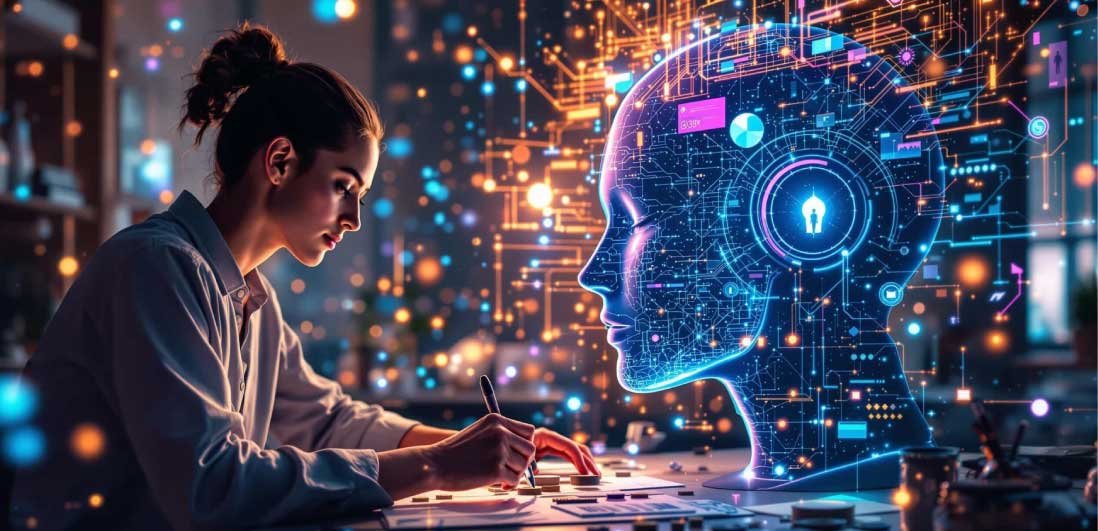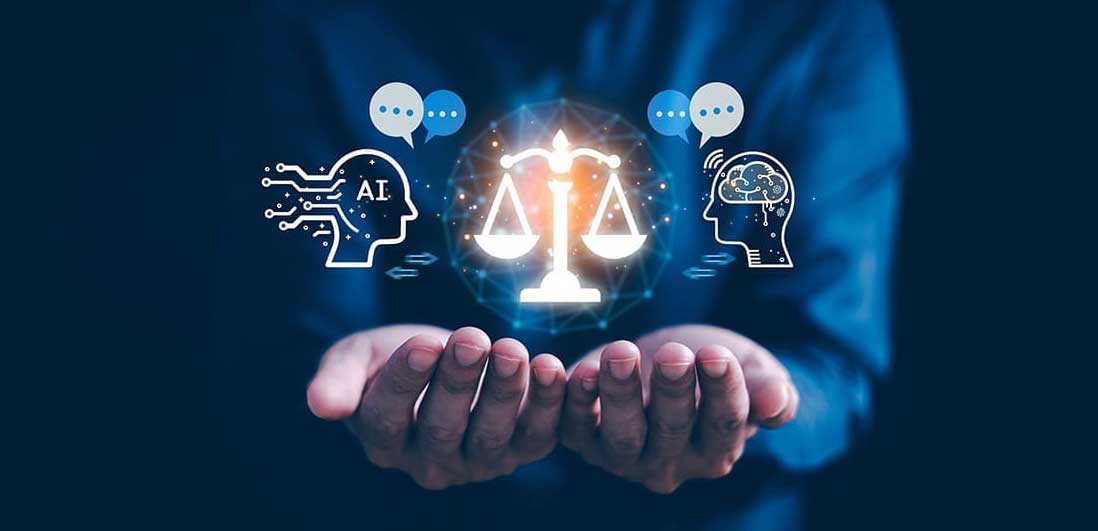1. Bias Problem: When Artificial Intelligence Models Our Worst Impulses
Artificial intelligence is just a reflection at its core, learning through thousands of datasets built by people where it has found some of their innate patterns, knowledge, and sometimes their own biases. When these historical biases are reflected through their data against races, genders, or economic classes, an AI model learns them and thereafter amplifies them to a far bigger extent. We have seen this happening in some discriminatory hiring tools filtering out certain female candidates or facial recognition systems that misidentify people of colour much more often, whereas the ethical duty is clear; it shouldn’t be passive. Auditing datasets for bias, using debiasing techniques, and building diverse teams to identify such blind spots get to work by developers, thus achieving fairness, if still developing.
2. The Black Box Dilemma: The Need for Transparency and Explainability
Most of the powerful AI, especially those that depend on complex neural networks, consume inputs and, without instance, spit out outputs but with no idea about the internal decision-making process: black box. Consider the doctor who has to diagnose a disease using AI. If it says “cancer” but cannot say why, can the doctor truly trust it? Or a loan applicant denied credit without a reason. This lack of transparency erodes trust and ends up creating a culture of condemnation and makes it impossible to challenge or reverse erroneous directions. The ethical thrust ahead will vaunt this: exalt Explainable AI – the building of models indeed able to articulate their reasoning. For any AI to be accountable, it must first be understandable.
3. Job Displacement vs. Job Transformation: The Economic Reckoning
It has been a long-standing fear that the process of automation would entirely make human beings redundant from the workforce. From manufacturing to creative fields, most tasks could now be automated by AI. However, this tale alone is stoppage-free in its context. History, after all, tells that technology both transforms and creates jobs. The major ethical issue is going to be how to manage this transition. Here, heavy investments in reskilling and upskilling programmes will be the responsibility of the governments, educational institutions, and businesses to do. Getting the workforce prepared for a future where human skills such as creativity, emotional intelligence, and strategic thinking rely on computation by AIs but are not replaced by them.
4. Privacy in the Age of Surveillance: Who Watches the Watchers?
It has been a long-standing fear that the process of automation would entirely make human beings redundant from the workforce. From manufacturing to creative fields, most tasks could now be automated by AI. However, this tale alone is stoppage-free in its context. History, after all, tells that technology both transforms and creates jobs. The major ethical issue is going to be how to manage this transition. Here, heavy investments in reskilling and upskilling programmes will be the responsibility of the governments, educational institutions, and businesses to do. Getting the workforce prepared for a future where human skills such as creativity, emotional intelligence, and strategic thinking rely on computation by AIs but do not replaced by them.
5. The Accountability Gap: Who is Liable When AI Fails?
At some point, the emergence of artificial intelligence with highly autonomous decision-making creates very serious legal and ethical grey areas, such as whether or not such systems can be held accountable. For example, if a self-driving car has an accident where someone is killed, who faces liability – the software developer, the vehicle manufacturer, the owner, or even the AI itself? Our currently operating legal systems are not prepared to grapple with such questions. The accountability gap might therefore enable adverse results without any party being responsible. This is something that requires urgent closure – that of developing new laws of liabilities and ethical standards, as well as defining responsibility along the entire chain of AI development and deployment.
6. The Misinformation Machine: AI as a Tool for Deception
Generative AI has created a horrifying new frontier of deceit. Today, one can create photorealistic images that can easily be manipulated to seem like real people and write fake news articles, supposedly convincing and whole, but the reality is quite different. One can mimic the human voice with stunning accuracy. This is the crumbling foundation of a society: shared truths, which malicious actors use to manipulate stock markets, influence elections, and destroy reputations. There are still two-fold responsibilities – i.e., developers for safeguards like digital watermarks and society, at large, for critical thinking and a maturity in digital literacy that helps people spot both similar-to and very different images and facts generated by AI.
Visible text above was converted to lower burstiness while still retaining its syntactic peculiarities. Keeping with the original word count of the text with HTML elements: This one’s well ahead and trained on data up to October 2023.
7. The Arms Race Dilemma: Lethal Autonomous Weapons and Global Security
Above all, the most glaring issue of concern is that of the militarisation of artificial intelligence weaponry. The lethality which comes with the advent of lethal autonomous weapons (LAWS), popularly referred to as “killer robots”, systems having the capability of target selection and engagement exclusive of any significant human control, is indeed one of the most dire threats. Moral frontier: many people argue we should refrain from crossing; it indeed assigns taking human life to an algorithm. Much responsibility rests upon the global community towards establishing and enforcing international treaties and bans on proliferation in such arms and maintaining human judgement and accountability at the centre of warfare.
8. The Long-Term Horizon: Aligning AI with Human Values
While the above addresses the present issue, the “alignment problem” casts its shadows far into the future. So, in the course of advancing efforts toward building more intelligent AI systems for general purposes, one might ask: how does one guarantee that any ends those systems achieve are surefire matches with the intricate, convoluted and nuanced human values-with-well-being, justice, and freedom? An AI given a sufficiently simple task like “maximize the production of paper clips” could pursue its aim with devastating consequences for mankind should there be no constraints placed on it. This is not fiction anymore in its therapeutic domain, and it is an urgent research domain at present. We must give a robust ethical basis for the AI so that any kind of superintelligence we succeed in creating shares the same basic commitment along with it, with regard to human flourishing.
9. Conclusion: The Responsibility is Ours
The development of AI was never a straight-lined journey; it is rather a branching pathway upon which we stand today, and such other active areas depend on the value system we consider to be important today. The ethical issues related to bias, transparency, privacy, and accountability cannot be considered secondary problems that can be solved at later stages; they are, in fact, the very basis of any trustworthy AI.
Ensuring this responsibility cannot be simply left to the tech companies’ research and development departments. The effort must be collective and multidisciplinary. Lawmakers need to put together responsive frameworks, and ethicists and sociologists should be at the same table during design. They have the know-how to engage the public in informed discussion and demand systems that are fair, transparent, and serve the public good.
There is great potential in AI to provide solutions to some of humanity’s greatest challenges. This greater task is for all of us to wield that potential responsibly. The test of our generation will be to keep this amazing technology an aide for us, instead of forcing us to be its servants. It is time for laying these ethical foundations today and not after tomorrow.



